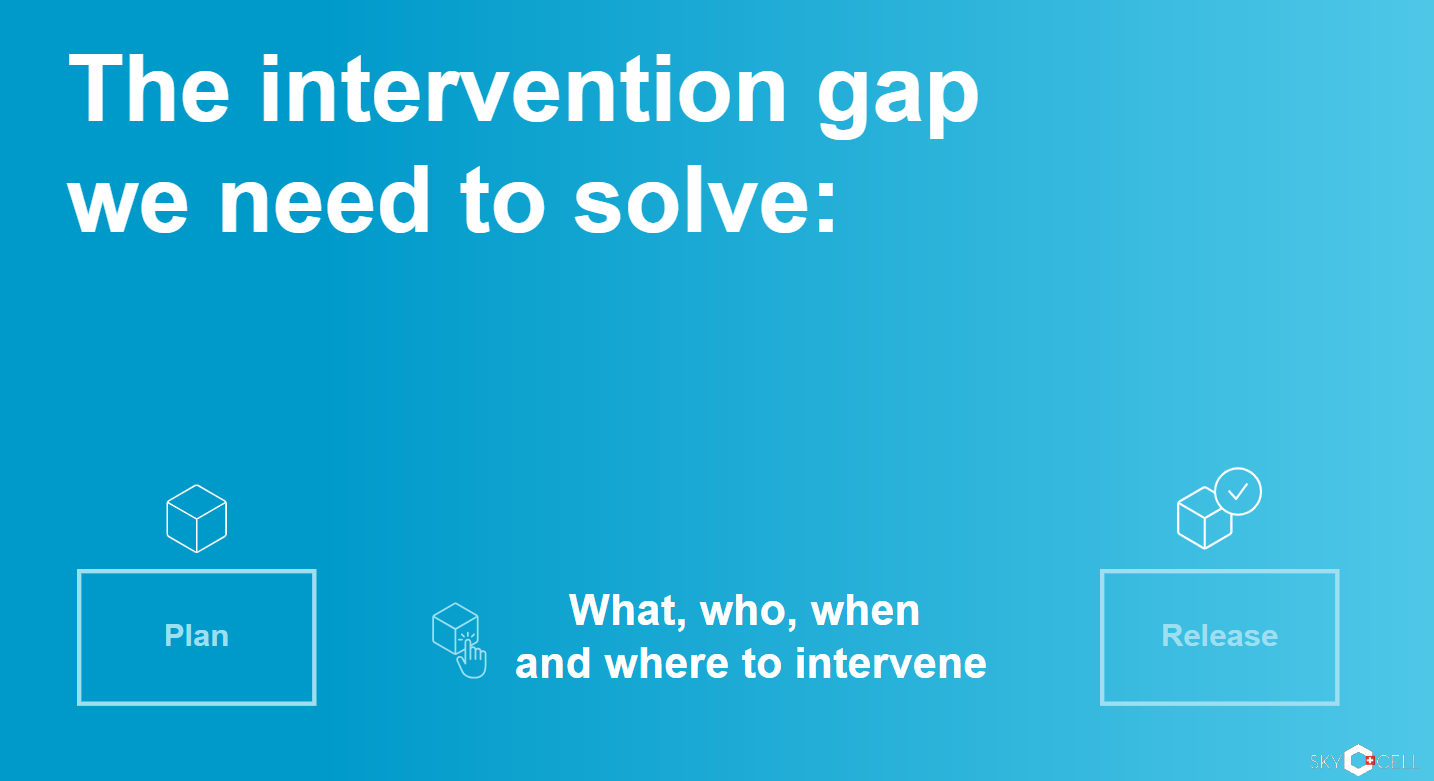At LogiPharma 2025, Nico Ros, CTO and co-founder of SkyCell, led a masterclass that cut through the noise around real-time data and AI in pharma logistics. Are they just industry buzzwords, or can they actually reduce risk and save shipments?
This article breaks down the core challenges faced in preventing product loss from planning to on-time intervention. It dives into how real-time data can be used effectively, what barriers are faced in saving a shipment, and the gap between insight and action.

Planning Smarter: How S+O Data Shapes Pharma Logistics
Protecting pharma shipments starts long before the shipment leaves the warehouse.
At SkyCell, for instance, every lane is simulated in advance. We carry out lane risk assessments using Validaide, but also enhance this with our own simulation (S) data in SkyMind, generating a digital twin of the lane. With this, we can estimate risk, cost, and carbon impact across various route options. But this only works when fed with current, high-quality data.
The operational (O) data collected in each shipment reinforces — or challenges — the assumptions made during planning. If a shipment regularly sits on the tarmac in Dubai for longer than expected, or if average humidity during monsoon season spikes in Mumbai, this O data gets fed back into future simulations.
This feedback loop is essential. Without it, lane assessments are static and blind to evolving realities. At SkyCell, we have tracked operational performance for over 13 years, enabling us to constantly fine-tune our simulations and lane designs.
Dive deeper into S+O data with insights from last year’s Masterclass.
But while prevention and planning are constantly improving, interventions are often a major challenge. And that’s where the real challenge begins: knowing not just what went wrong, but acting fast enough to do something about it.
Reacting Faster: The Challenge of Real-Time Intervention
One of the most valuable promises of real-time data is its ability to flag issues before they escalate. Whether it's a sudden temperature spike, an unexpected delay, or a deviation from the planned route, real-time alerts give pharma companies the chance to step in early — ideally before a shipment is compromised.
But identifying a problem is only half the battle. What’s often missing is the ability to intervene swiftly enough to save a shipment.
This is the intervention gap.

To intervene in time, you need to detect the issue before it becomes an excursion. You also need to understand how severe it is — to avoid over-alerting and flooding teams with low-importance information. Then you need to know what to do, and crucially, who to contact to make it happen.
This can be mapped out as 8 steps:
- Detect the issue (ideally in advance)
- Assess the severity and prioritize accordingly
- Identify the proper resolution steps, often based on exception SOPs
- Contact the responsible freight forwarder
- Share the shipment’s location, the nature of the issue, and proposed action
- Identify the correct frontline worker (e.g., ground handler or local carrier)
- Deliver clear instructions to the frontline worker
- Confirm the intervention succeeded and document the event
All of these steps can be automated — except Step 7. Delivering real-time instructions to a frontline worker — someone who can actually move a container, redirect a truck, or initiate loading — relies on manual communication.
And on a global scale, this is incredibly difficult. Who do you call in Delhi if a truck breaks down? This last mile of intervention is where pharma logistics is still far too slow. It’s not solely down to a lack of information — it's due to a lack of real-time connectedness across stakeholders. So, what's the next step?
Resolving Better: Learn How to Close the Intervention Gap
For predicting risks, we need reliable data and analytics, based on accurate simulations and operational data. The next stage is where artificial intelligence enters the picture — not as a hype engine, but as a practical tool to bridge the gap between detection and intervention. If you want to learn more about how AI can support pharma companies in achieving this goal, join the upcoming webinar hosted by Nico Ros.